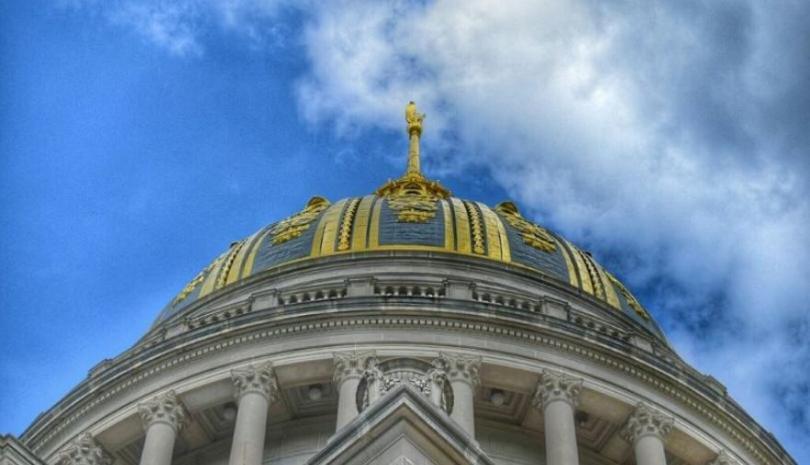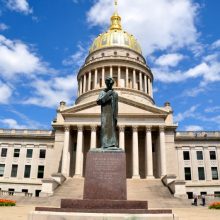West Virginia State Capitol
A Capitol Building Commission, created by the Legislature in 1921, authorized the construction of the present capitol. Architect Cass Gilbert designed the buff limestone structure that was to have a final cost of just under $10 million. After the three stages of construction were completed, Governor William G. Conley dedicated the capitol on June 20, 1932.
We were contracted to perform the following tasks on the gilded lead-coated copper Capitol dome: 1) determine the original finishes and techniques used in its creation; 2) determine the techniques and materials that were used in the most recent gilding campaign; 3) examine the present condition of the copper substrate to determine the extent of wear and any damage that may have occurred due to manmade or natural occurrences; 4) determine the stability of the attached decorative elements and the means that were used to support them and connect them to the dome; 5) understand the local climate and the environment of Charleston; 6) evaluate the logistics of the site to assist SHC in the generation of performance specifications; 7) determine a temporary, short-term, means of improving the aesthetic appearance of the dome; and 8) perform mock-up samples of cleaning techniques that are candidates for the future restoration of the dome.
Additionally, we generated a testing report that evaluated the effectiveness of two different coating systems to be used on the dome. The testing evaluated the coatings: 1) adhesion to the copper substrate; 2) abrasion resistance; 3) chemical resistance; 4) flexibility in relation to the coefficient of expansion of copper; 5) heat and UV resistance; 6) impact resistance; 7) moisture resistance; and 8) their compatibility with different sizing and gold leafing materials. Each of the proposed coating materials was tested initially and then again after accelerated weathering exposure.







